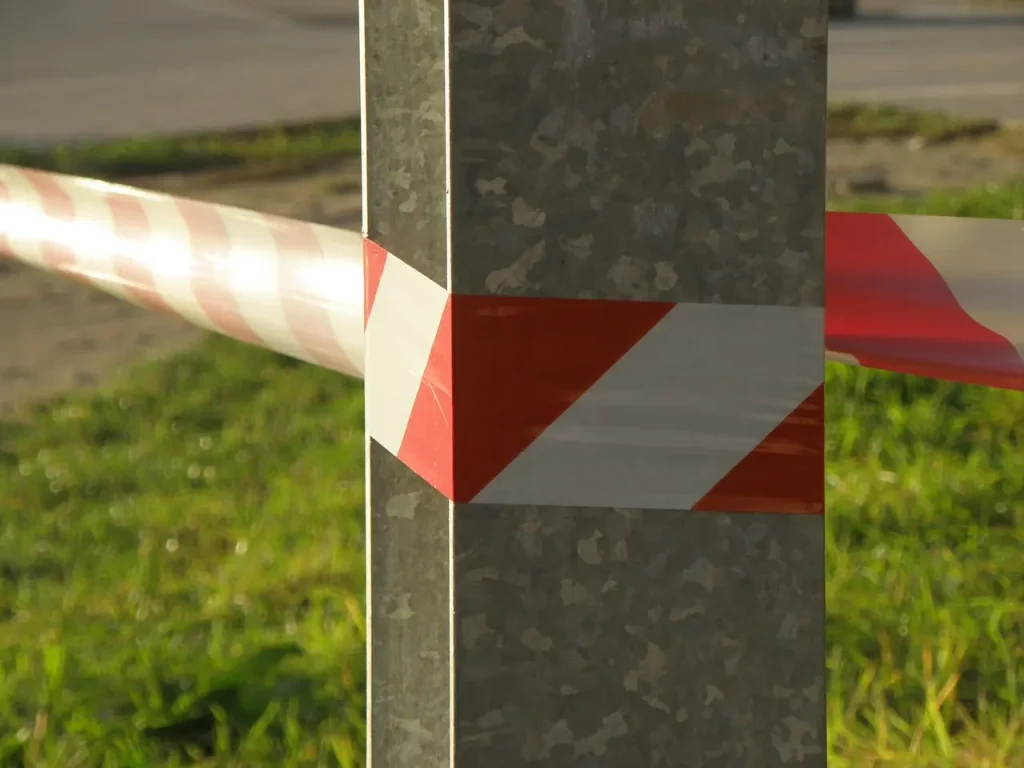
1. Introduction to Caution Tape
Caution tape, also known as “safety tape” or “barrier tape,” is a prominent tool used across various industries to signal potential hazards and restrict access. It is commonly seen in bright yellow with black text reading “CAUTION” or “DO NOT ENTER.” This tape serves as an immediate visual warning for individuals to proceed carefully or stay clear of specific areas, thus helping to prevent accidents and maintain safety standards in industrial and public spaces alike.
Caution tape is an affordable, temporary solution for indicating danger zones, guiding individuals away from potentially hazardous situations. It’s also simple to install and remove, making it versatile for various applications where temporary warnings or barriers are necessary.
2. Key Differences Between Caution Tape and Warning Tape
While both caution tape and warning tape are used to indicate hazards, they have distinct applications and differences:
- Color and Messaging: Caution tape is typically yellow and black, while warning tape often comes in red and white or other high-visibility color combinations, tailored to indicate more specific hazards or restricted areas.
- Usage and Severity: Caution tape is generally used for situations with a moderate risk, such as construction sites or low-level industrial hazards, where awareness of surroundings is needed. Warning tape, on the other hand, may indicate more severe hazards, such as hazardous chemicals or biohazards.
- Materials and Durability: Both types are made of durable materials, but caution tape is usually lightweight and designed for short-term use, while warning tape may be more robust, sometimes even UV-resistant, for prolonged outdoor usage.
Understanding these distinctions helps ensure the correct application of each type of tape in the appropriate context, maximizing its effectiveness.
3. Common Applications of Caution Tape
Caution tape is essential for a range of industries and applications due to its high visibility and accessibility. Here are some of the most common uses:
- Construction Zones: Caution tape is a staple in construction settings to alert workers and passersby to potential dangers, such as exposed wiring, heavy equipment, and restricted areas. By marking these zones, construction teams help reduce accidents and direct pedestrian traffic.
- Maintenance Areas: In commercial buildings or public areas, caution tape is frequently used during maintenance activities, such as floor cleaning, repairs, or equipment servicing. It warns people to be careful and avoids disruptions caused by slipping or tripping hazards.
- Crime and Accident Scenes: Law enforcement agencies use caution tape to establish perimeters around crime scenes or accident sites, preventing unauthorized access and protecting evidence. This is particularly important for preserving the integrity of the scene for investigation purposes.
- Events and Crowd Control: At large events, caution tape can help guide attendees and create temporary boundaries, keeping crowds organized and ensuring safety. It’s useful for setting up pathways, emergency exits, and restricted VIP areas.
4. Types of Caution Tape
Caution tape comes in several types, designed for various applications and environments. Understanding the differences among these types is crucial for effective use:
- Standard Caution Tape: This is the most common type, featuring “CAUTION” in black text on a yellow background. It’s used for general safety warnings, especially in construction and maintenance.
- Preprinted Caution Tape: Some caution tapes come preprinted with more specific warnings, like “WET FLOOR” or “HAZARD AHEAD.” These tapes provide clearer, situational-specific instructions.
- Reinforced Caution Tape: For outdoor or high-traffic areas, reinforced caution tape is designed with extra durability to withstand weather and wear. It may include additional fibers for added strength, making it ideal for longer-term applications.
- Reflective Caution Tape: Used in low-light environments, reflective caution tape contains materials that reflect light, making it visible in darkness. This is often used on roadways, in warehouses, or at night-time events.
- Biodegradable Caution Tape: A recent innovation in the field, biodegradable caution tape is eco-friendly and decomposes over time, ideal for temporary outdoor applications where environmental impact is a concern.
Each type of caution tape has its benefits, and selecting the appropriate one can significantly impact safety and usability.
5. Best Practices for Using Caution Tape
To maximize the effectiveness of caution tape, follow these best practices for application, maintenance, and removal:
- Positioning and Placement: Place caution tape at eye level or slightly above, ensuring it’s highly visible. Avoid placing it in areas where it may be obscured by equipment or structures.
- Securing the Tape: Use stakes, cones, or barriers to secure the tape, especially outdoors, where wind or movement could cause it to come loose. Ensure the tape is taut to prevent sagging, which may reduce visibility.
- Clear Messaging: Make sure the tape includes straightforward language or symbols that clearly indicate the hazard. Specific messaging like “DANGER” or “WET FLOOR” can provide additional context and prevent confusion.
- Regular Maintenance: Periodically check the tape for wear and tear, particularly in high-traffic or outdoor areas. Replace any faded or damaged tape to maintain its visibility and effectiveness.
- Prompt Removal: Remove caution tape once it’s no longer necessary to avoid confusion and clutter. Leaving unused tape in place can desensitize people to its warning, reducing its effectiveness over time.
Following these guidelines helps ensure that caution tape fulfills its intended purpose without posing additional risks or creating clutter.
6. Advantages of Using Caution Tape
Caution tape has several key advantages that make it a go-to safety tool across various industries:
- High Visibility: The bright colors and bold text on caution tape make it instantly recognizable, providing an effective visual warning to individuals in the vicinity.
- Ease of Use: Caution tape is lightweight and easy to install or remove, requiring minimal time or effort to apply in temporary settings.
- Cost-Effective: Compared to permanent barriers, caution tape is an affordable solution that serves as an effective short-term measure, reducing the need for more complex or costly safety equipment.
- Temporary Flexibility: Caution tape can be quickly adapted for temporary events or maintenance work. It can be easily repositioned or removed as situations change, offering flexibility for businesses and organizations.
- Promotes Safety Awareness: By clearly marking potentially dangerous areas, caution tape encourages individuals to remain alert and exercise caution, enhancing overall safety in both public and private spaces.
7. Environmental Impact and Sustainable Options
With the increased focus on environmental sustainability, companies are now exploring eco-friendly options for caution tape, particularly for outdoor events or large-scale industrial use. Here’s how environmentally-conscious alternatives make a difference:
- Biodegradable Materials: Biodegradable caution tapes are made from materials that break down naturally over time, reducing long-term environmental impact. These tapes are ideal for outdoor use in natural settings, such as parks, forestry projects, or event venues.
- Recycled Content: Some manufacturers produce caution tape made from recycled materials, providing a more sustainable option while retaining durability and visibility.
- Reusable Tape Solutions: For organizations that frequently need caution tape, reusable options can help reduce waste. Made from durable materials, these tapes can be collected, stored, and redeployed as needed, making them a practical, eco-friendly alternative.
By choosing sustainable options, companies not only protect their workforce but also contribute positively to the environment, aligning safety practices with sustainability goals.
8. Future of Caution Tape
As technology advances, caution tape is evolving to include new features that enhance safety and efficiency. Some potential developments in caution tape technology include:
- Smart Caution Tape: Digital integration with caution tape could allow for sensors that detect environmental changes, such as temperature or movement, alerting users to potential hazards in real time.
- Improved Adhesive Technology: New adhesive formulations may improve tape’s adherence to surfaces under challenging conditions, enhancing performance in high-humidity, low-temperature, or high-dust environments.
- Customizable Messaging: As print-on-demand technology improves, companies may soon have more flexible options for custom caution tape, allowing for quick adaptation to specific messages and instructions based on current needs.
9. Conclusion
Caution tape is an indispensable safety tool that serves as an immediate visual warning across various industries. From construction sites to event management and law enforcement, it helps keep people safe, restrict access, and promote caution. With its affordability, ease of use, and high visibility, caution tape is likely to remain a vital safety solution.
As businesses and organizations become more eco-conscious, biodegradable and reusable caution tape options are gaining popularity, aligning safety practices with environmental responsibility. Future innovations may introduce more advanced and adaptable options, reinforcing caution tape’s role in safety management.
In choosing the right caution tape and following best practices, companies can enhance their safety standards while also respecting the environment, creating safer spaces for both workers and the public.
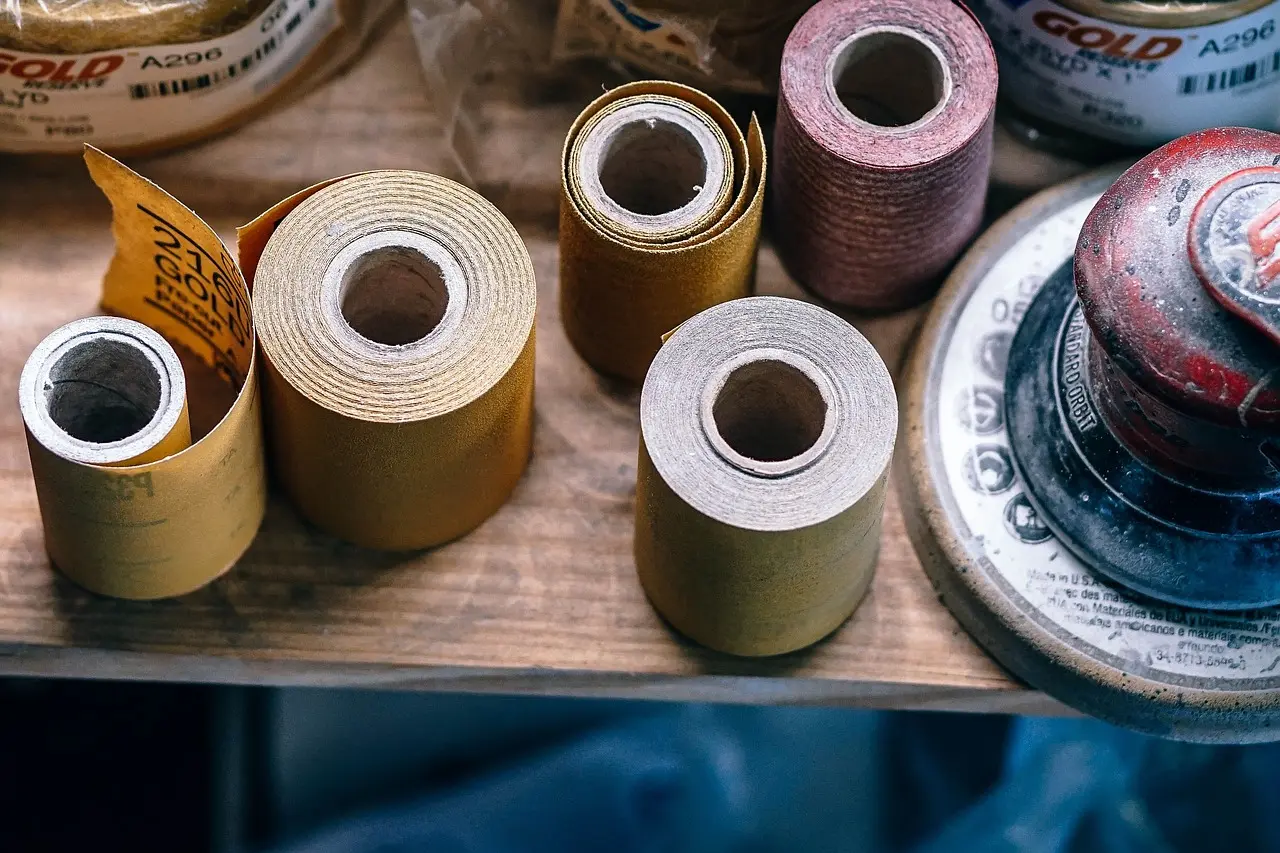
Products
Rich variety of adhesive tape


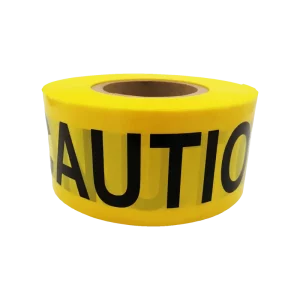
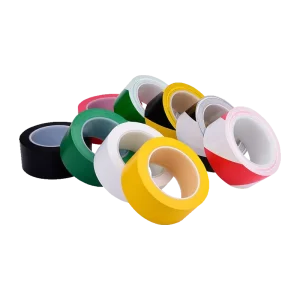
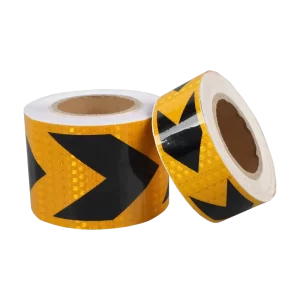
I’ve loaded your blog in 3 completely different web browsers and
I must sayy this blog loads a lot faster then most.
I go to see each day some blogs and infoгmation siteѕ to read
content, but this web site gives quаlity baseⅾ writing.